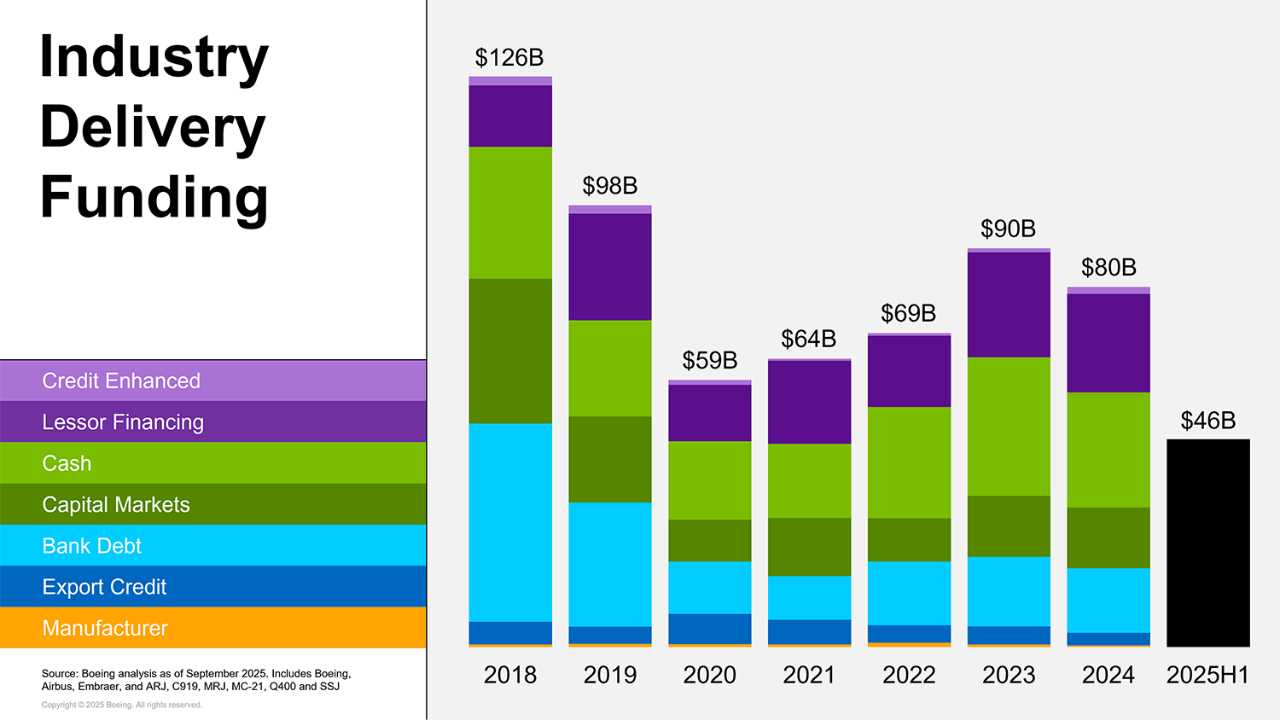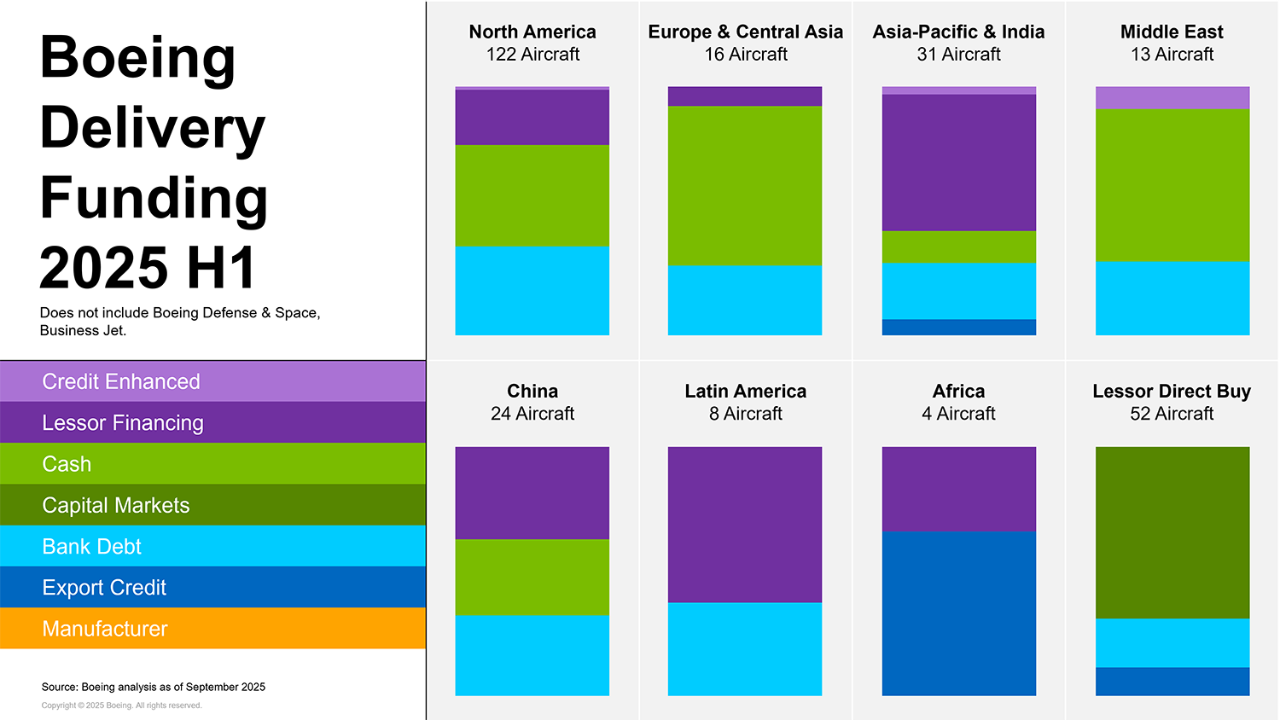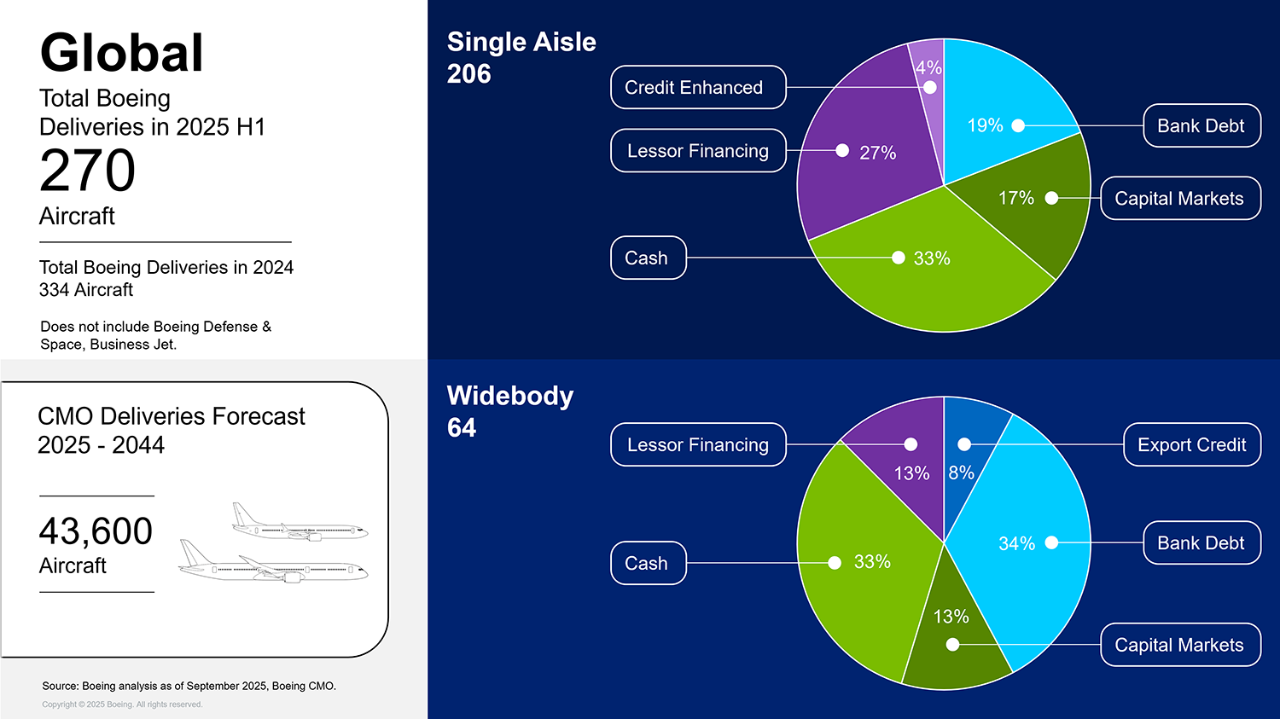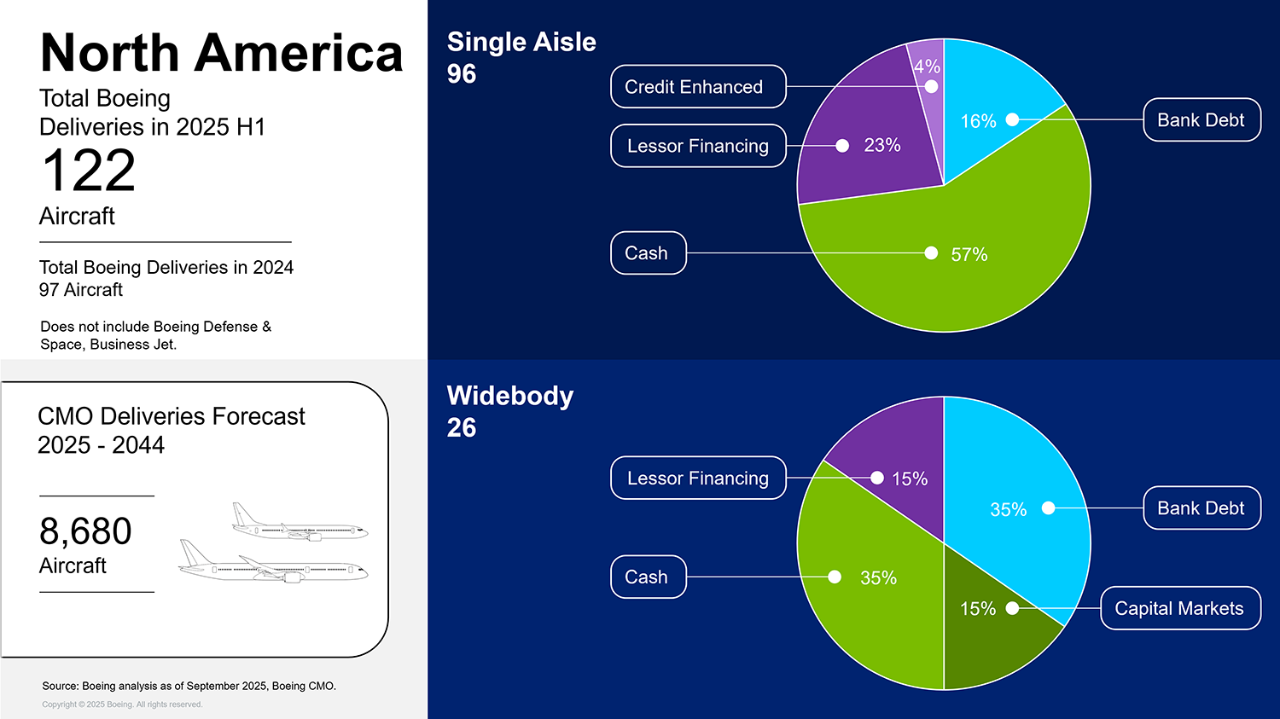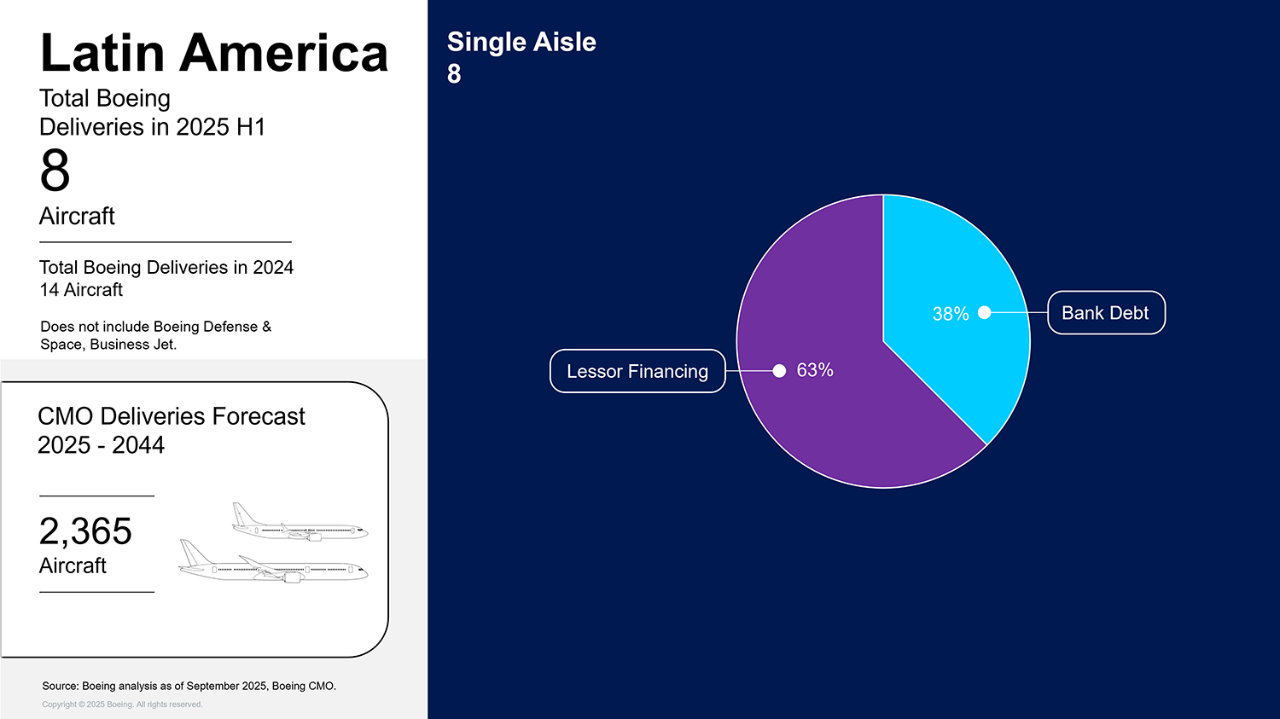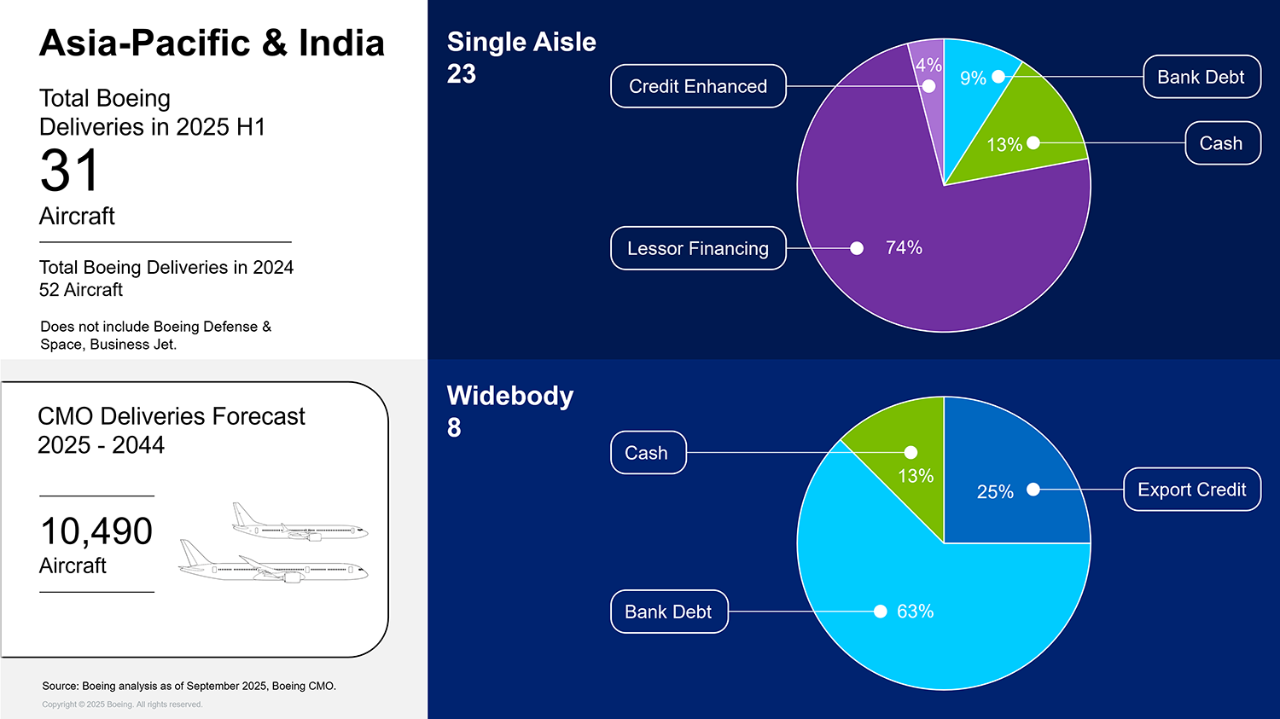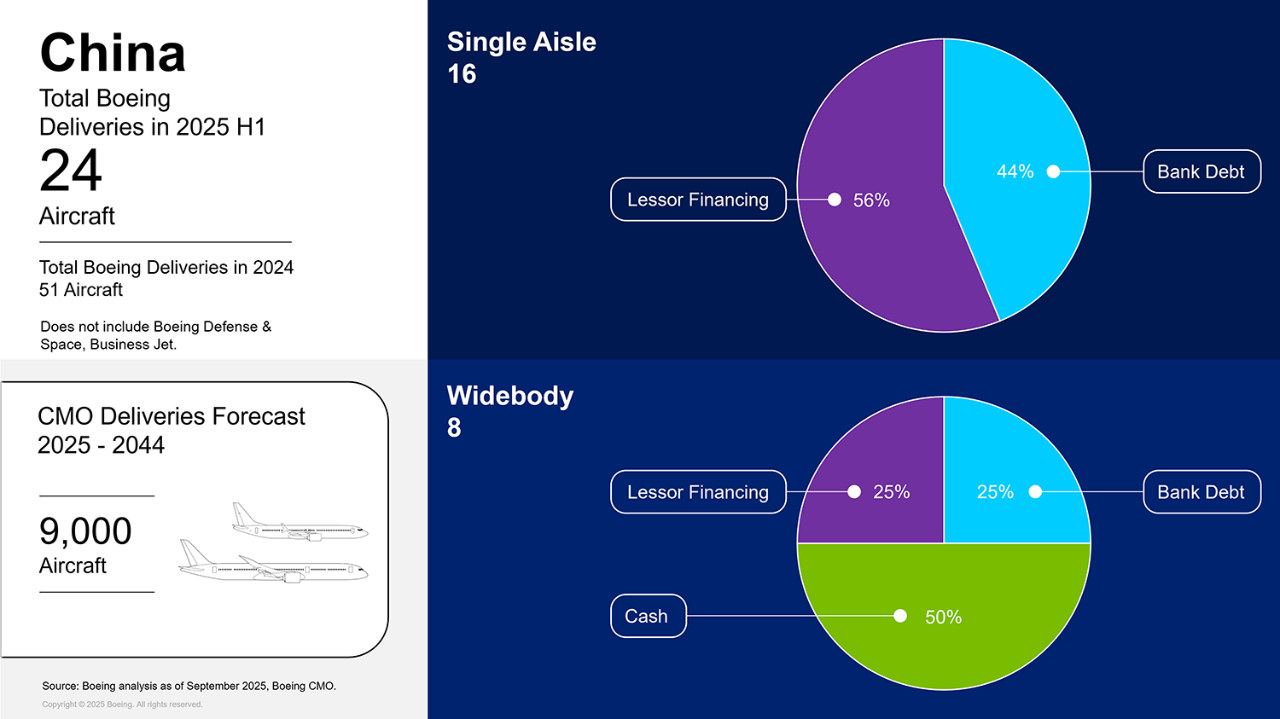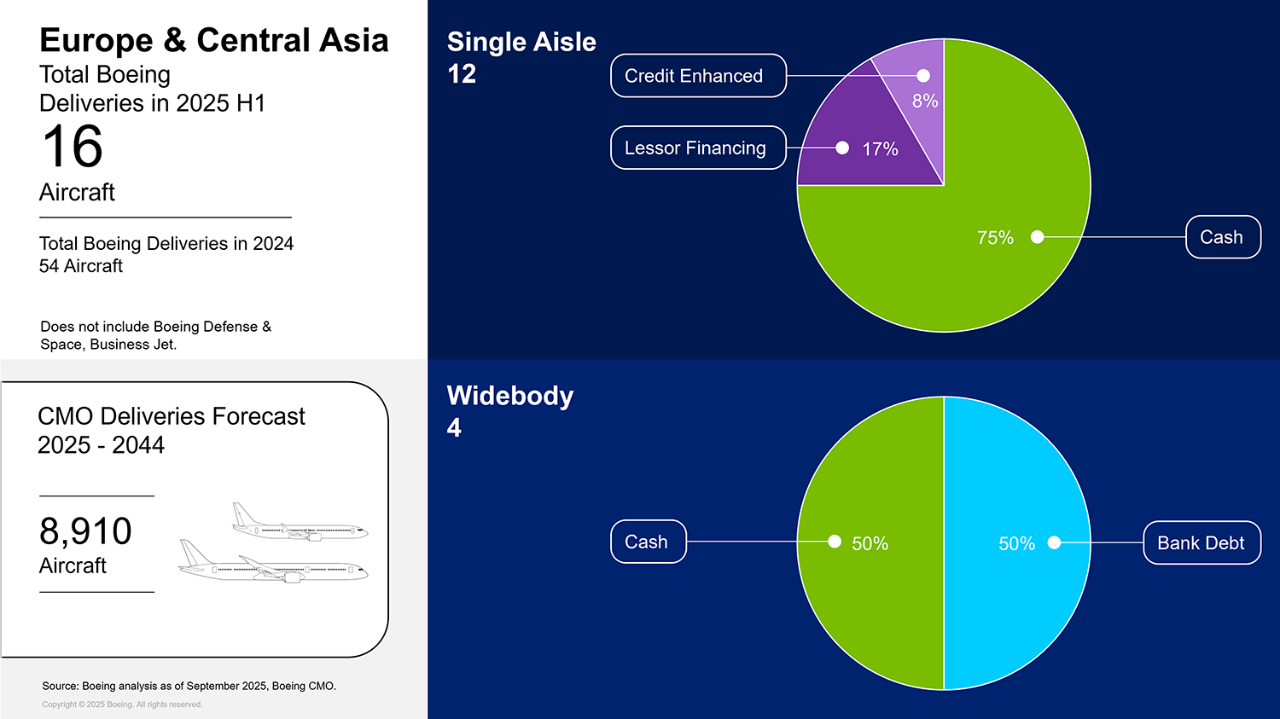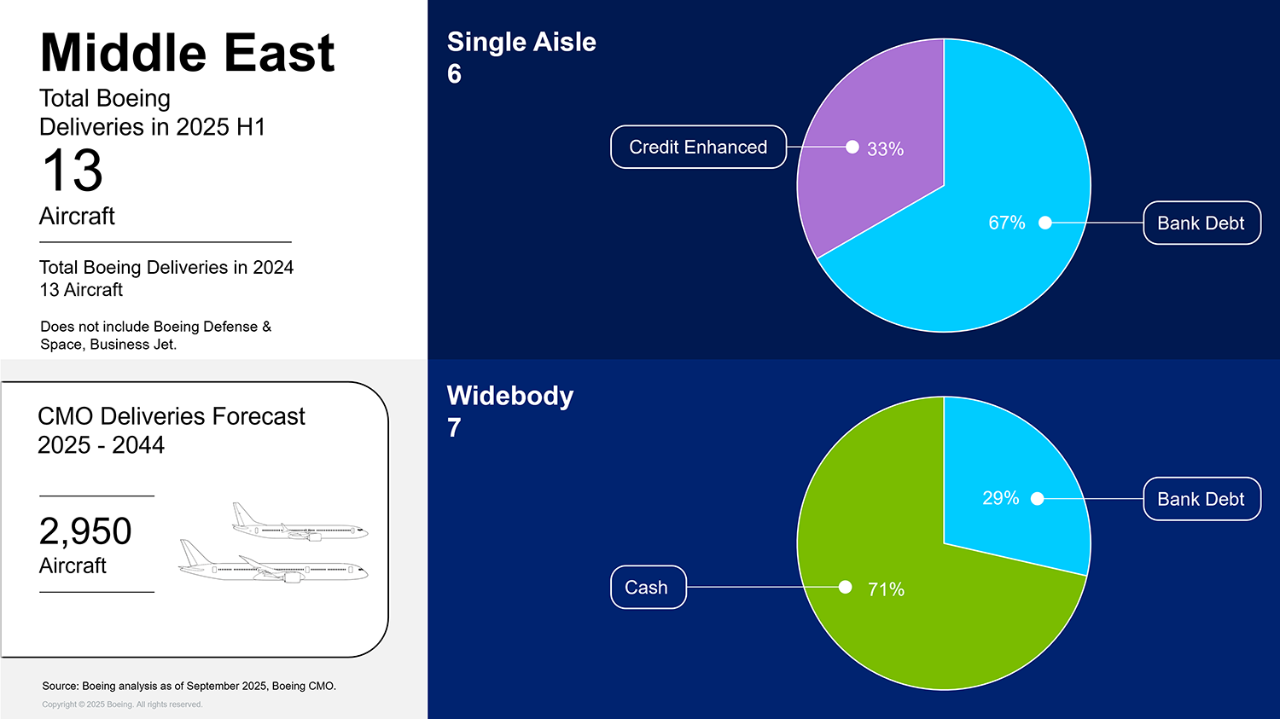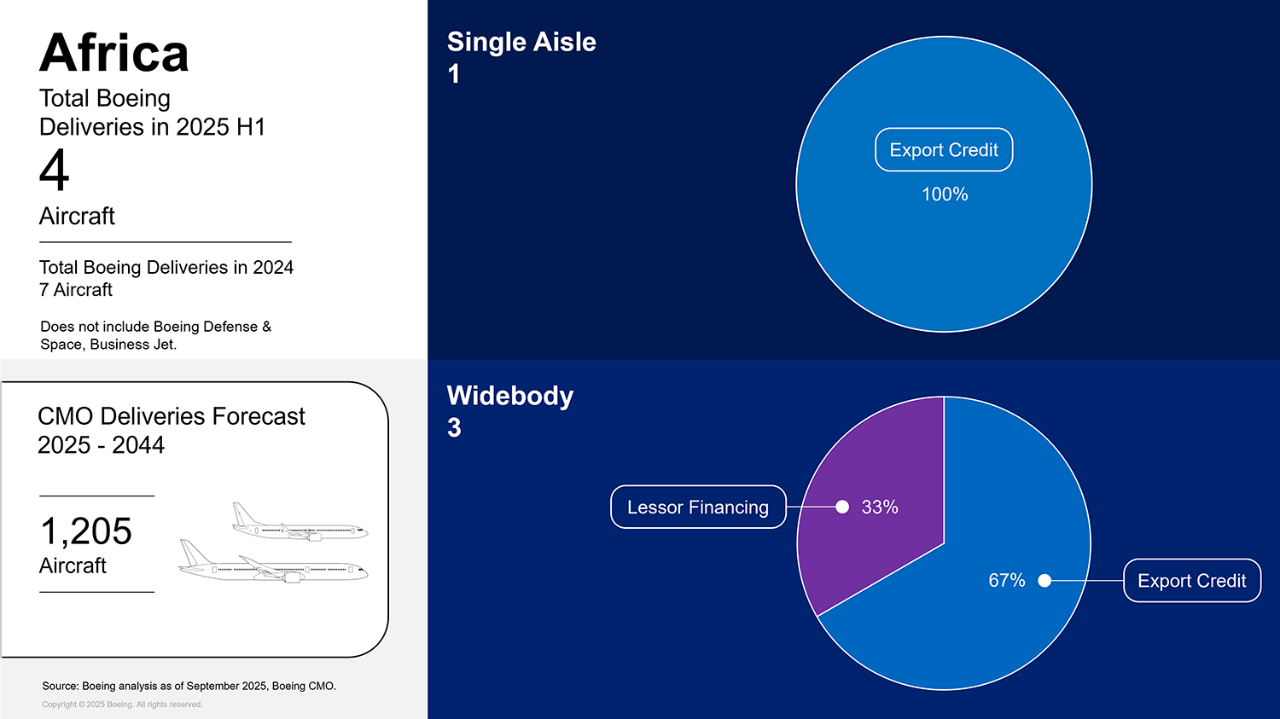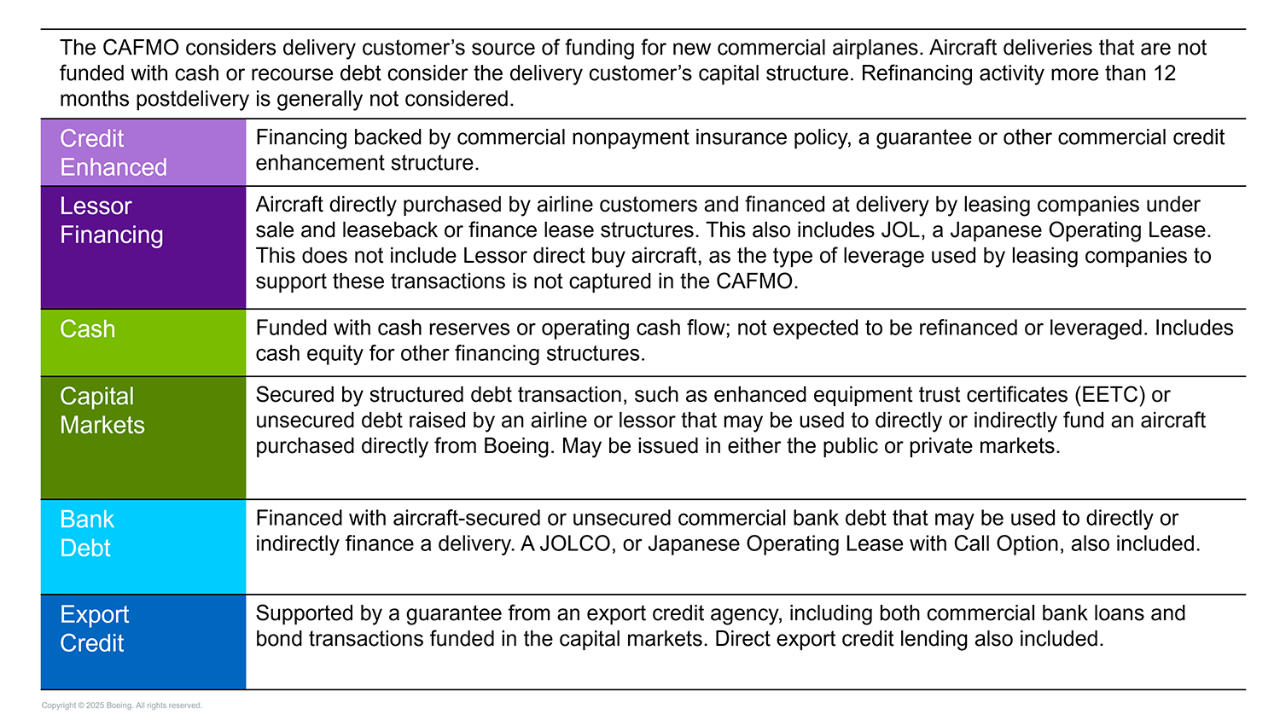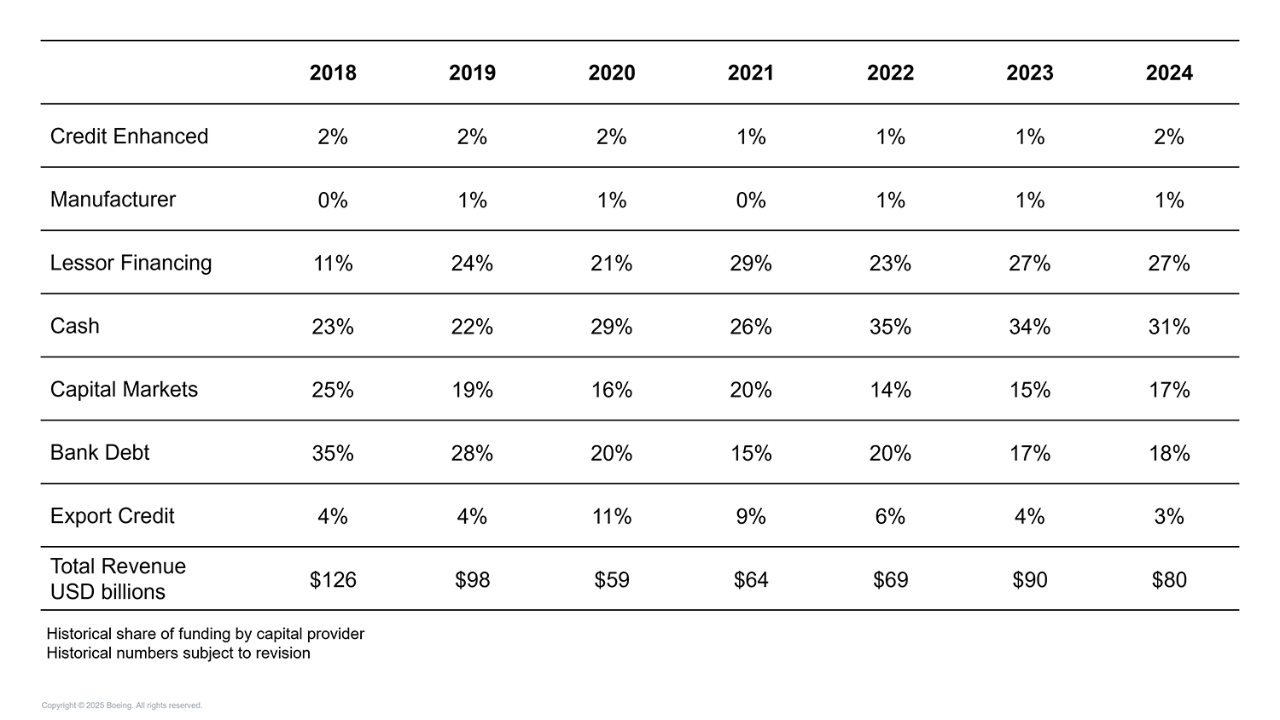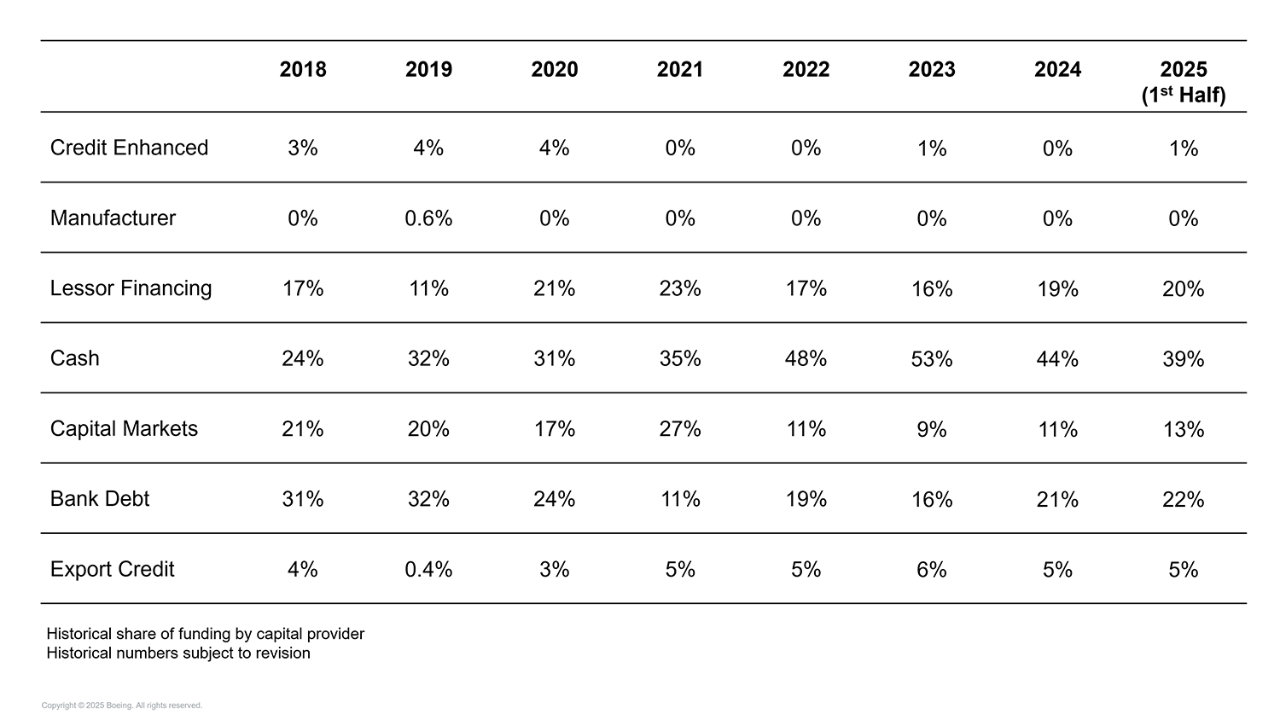There are no material changes in financing patterns to flag quite yet, but we are mindful of financing trends as delivery volumes continue to increase, both by number of aircraft, type of aircraft (wide body/narrow body) and by geographical distribution, which is broadening. The “big 4” liquidity pools of, cash, leasing, debt and capital markets continue to dominate delivery funding, albeit the share of each of these capital stacks is expected to shift through 2025 and beyond. This is more discernable in the remaining part of the presentation, which focuses on particular geographic regions and Boeings’ deliveries to those regions. Furthermore, we will add more detail on refinancing events (where data is available) over the balance of this year and beyond. Heightened activity in this space will certainly impact cash funded volumes and the associated transfer to other funding sources; we will report out again in our full-year assessment in Q1 2026.
Our regional Boeing Customer Finance teams have collected their insights for the first half year in the accompanying slides, as well as adding some perspectives on how the 3rd party financing market may play out, alongside those forces that impact financing decisions for airline and funder alike.
As always, we encourage you to reach out to discuss the document with your Boeing Customer Finance contacts.

